Coordinating Rugs with Other Home Decor Elements

When it comes to interior design, carefully coordinating various elements is essential to creating a cohesive and visually appealing space. Among these elements, rugs play a pivotal role in tying together different design elements and enhancing the overall aesthetic of a room.
Whether used as a focal point or a subtle accent, rugs can elevate any space's style and ambience. In this article, we will explore the art of coordinating rugs with other home decor elements, exploring strategies for selecting the perfect rug to complement existing furnishings, colour schemes, and architectural features.
Choosing the Right Rug Size and Shape
One of the first considerations when coordinating rugs with other home decor elements is selecting the right size and shape. The rug size should be proportional to the size of the room and the furniture arrangement within it. In a living room, for example, a large area rug should be large enough to accommodate all furniture legs or sit comfortably under the main seating area. Alternatively, in a dining room, the rug should extend beyond the edges of the dining table to allow ample space for chairs to be pulled out.
In addition to size, the rug's shape can also impact a room's overall look and feel. Rectangular rugs are the most common choice for living rooms and bedrooms, while round rugs can add visual interest and soften angular spaces. Irregular shapes, such as cowhide or sheepskin rugs, can make a bold statement and add texture to a room.
Coordinating Rugs with Colour Schemes
Colour is vital when it comes to coordinating rugs with other home decor elements. The colour of the rug should complement the existing colour scheme of the room while adding visual interest and depth. For rooms with neutral or monochromatic colour schemes, rugs can introduce pops of colour and pattern to create visual contrast and focal points. Alternatively, in rooms with bold or vibrant colour schemes, rugs can act as grounding elements that tie together disparate colours and create a sense of cohesion.
When selecting a rug colour, consider the mood and atmosphere you want to create in the room. Cool colours, like greens and blue, evoke a sense of serenity and calm, while warm colours, such as oranges and red, create a cosy and inviting atmosphere.

Creating Texture and Contrast
In addition to colour, texture also impacts how you coordinate rugs with other home decor elements. Texture adds depth and dimension to a room, creating visual interest and tactile appeal. When selecting a rug, consider the texture of existing furnishings and finishes in the room, such as upholstery fabrics, wood finishes, and decorative accessories. A plush, shaggy rug can add warmth and cosiness to a contemporary space, while a flatweave or jute rug can lend a casual and relaxed vibe to a coastal-inspired room.
Mix and match textures throughout the room to create contrast and visual interest. Pair a smooth, sleek rug with textured upholstery fabrics, or layer a nubby, textured rug over a smooth hardwood floor. By playing with texture, homeowners can add depth and richness to their home decor scheme, creating a dynamic and inviting space that reflects their personal style.
Coordinating Rugs with Architectural Features
Lastly, consider the room's architectural features when coordinating rugs with other home decor elements. Rugs can be used to highlight architectural details such as fireplaces, bay windows, or built-in shelving units. In a living room with a fireplace, for example, a rug can be centred in front of the hearth to create a cosy seating area. Alternatively, a round rug can be placed beneath the dining table in a dining room with a bay window to define the space and add visual interest.
When selecting a rug for a room with architectural features, consider the scale and proportion of the space. A large statement rug may overwhelm a small room with intricate architectural details, while a small accent rug may get lost in a large, open space. Additionally, consider the style and period of the architecture – a contemporary rug may clash with traditional architectural features, while a vintage-inspired rug can complement historic details and add character to the space.

Wrapping Up
Coordinating rugs with other home decor elements is essential for creating a cohesive and visually appealing space. By carefully selecting the proper size, shape, colour, and texture of the rug, homeowners can enhance the style and ambience of any room.
Whether used as a focal point or a subtle accent, rugs can transform a room and reflect the homeowner's style and taste. With a thoughtful approach to coordination, rugs can elevate the design of any space and create a welcoming and inviting environment for years to come.
How to Coordinate Rugs: Creating Harmony in Your Home
Coordinating rugs throughout your home can create a cohesive and stylish interior. Start by choosing a unifying colour palette that complements your overall decor. Consider using rugs with similar patterns or textures to create visual continuity. Pay attention to the scale of patterns, ensuring they don't clash when viewed together. Mix different sizes and shapes of rugs to add interest, but maintain a consistent style theme. Remember, coordinating doesn't mean matching exactly; aim for a harmonious blend that enhances your home's aesthetic.

How to Coordinate Rugs in Adjacent Rooms: Seamless Transitions
When coordinating rugs in adjacent rooms, focus on creating a smooth visual flow. Choose rugs with complementary colours or patterns that echo elements from neighbouring spaces. Consider using similar materials or pile heights for a cohesive feel underfoot. In open-plan layouts, use rugs to define distinct areas while maintaining a unified look. Don't be afraid to mix patterns, but ensure they share at least one common colour. Remember, the goal is to create a harmonious transition between spaces, not an exact match.
Coordinating Rugs in Open Floor Plan: Defining Spaces with Style
In open floor plans, rugs play a crucial role in defining separate functional areas. Choose rugs that complement each other in terms of colour and style, but don't necessarily match exactly. Use different sizes and shapes to delineate spaces like living, dining, and work areas. Consider a large, neutral rug as a base, then layer smaller, more vibrant rugs to add interest. Ensure there's enough space between rugs to prevent a cluttered look. Remember, the rugs should work together to create a cohesive, well-designed space.

Coordinating Rugs with for Living Room: Enhancing Your Central Space
When coordinating rugs for your living room, consider the overall style and colour scheme of the space. Choose a rug that complements your furniture and ties together different elements in the room. If you have patterned furniture, opt for a solid or subtly patterned rug to avoid visual overload. For solid-coloured furniture, a bold patterned rug can add interest. Consider layering rugs of different sizes and textures for a more dynamic look. Remember to choose a rug size that fits your seating arrangement properly.
Coordinating Rugs and Runners: Guiding the Eye Through Your Home
Coordinating rugs and runners can create a cohesive flow throughout your home. Choose runners that complement the colours or patterns of your area rugs. Use runners to guide the eye between spaces, creating visual connections between rooms. Consider using similar materials for a unified feel underfoot. In long hallways, use multiple runners with consistent styling to create a sense of continuity. Remember, runners are an excellent opportunity to introduce subtle pattern or colour that ties in with your larger area rugs.
Matching Rugs Different Sizes: Playing with Scale and Proportion
When matching rugs of different sizes, focus on creating balance within your space. Choose rugs with similar colour palettes or complementary patterns to ensure visual cohesion. Use larger rugs to anchor main living areas and smaller rugs to define secondary spaces or add accents. Consider layering rugs of different sizes for a more dynamic look. Remember, the key is to maintain proportion – ensure smaller rugs don't look lost in large spaces, and larger rugs don't overwhelm smaller areas.
Coordinating Rugs with Gray: Versatile Pairings for a Neutral Base
Gray rugs offer a versatile base for coordinating with other elements in your home. Pair gray rugs with pops of colour in furniture or accessories for a vibrant look. Consider rugs with subtle patterns in shades of gray for added interest. For a monochromatic scheme, layer different tones of gray in various textures. Gray rugs work well with both warm and cool colour palettes, making them easy to coordinate with existing decor. Remember, the undertones in your gray rug can guide your colour choices for a harmonious look.

Coordinating Rugs in Same Room: Creating a Cohesive Space
When using multiple rugs in the same room, aim for a balanced and harmonious look. Choose rugs with complementary colours or patterns that don't compete for attention. Consider using different textures to add depth and interest to the space. Ensure the scale of patterns is varied – pair a large-scale pattern with a smaller, more subtle one. Use rugs to define different areas within the room, such as seating or dining spaces. Remember, the rugs should work together to enhance the overall aesthetic of the room.
Coordinating Rugs and Curtains: Balancing Floor and Window Treatments
Coordinating rugs and curtains can tie your room's design together beautifully. Look for common colours or patterns between your rugs and curtains to create a cohesive look. If your rug is boldly patterned, consider solid curtains in a complementary colour, or vice versa. For a more subtle approach, choose curtains and rugs in different shades of the same colour. Consider the texture of both elements – a plush rug might pair well with sleek curtains for contrast. Remember, the goal is to create a balanced look that enhances your overall room design.
Do Area Rugs Need to Match: Embracing Variety with Style
Area rugs don't necessarily need to match exactly, but they should complement each other and your overall decor. Focus on creating a cohesive look by choosing rugs with similar colour palettes or complementary patterns. Consider the function and style of each room when selecting rugs. In open-plan spaces, use rugs to define different areas while maintaining a unified aesthetic. Remember, variety can add interest to your home – the key is to ensure all elements work together harmoniously.
How to Coordinate Area Rugs in Your Home: A Holistic Approach
Coordinating area rugs throughout your home requires a holistic approach. Start by considering your home's overall colour scheme and style. Choose rugs that complement each other from room to room, creating a sense of flow. Use similar colours or patterns to tie different spaces together. Consider the function of each room when selecting rug materials and styles. In open-plan areas, use rugs to define separate spaces while maintaining a cohesive look. Remember, coordinating doesn't mean matching exactly – aim for a harmonious blend that enhances your home's unique character.
How to Coordinate Area Rugs: Techniques for a Unified Look
Coordinating area rugs effectively can elevate your home's interior design. Begin by selecting a unifying colour palette that complements your overall decor. Consider using rugs with similar patterns or textures to create visual continuity throughout your home. Pay attention to the scale of patterns, ensuring they don't clash when viewed from room to room. Mix different sizes and shapes of rugs to add interest, but maintain a consistent style theme. Remember, the goal is to create a harmonious flow that enhances your home's aesthetic while allowing each room to maintain its unique character.
Coordinating Living Room and Dining Room Rugs: Connecting Adjacent Spaces
When coordinating rugs between living and dining rooms, focus on creating a cohesive transition. Choose rugs that share common colours or complementary patterns to tie the spaces together. Consider the scale of the rooms and select rug sizes accordingly – typically, the living room rug will be larger. If the rooms have different colour schemes, look for rugs that incorporate colours from both spaces. For open-plan areas, ensure there's enough space between the rugs to define each area while maintaining a unified look. Remember, the rugs should enhance the flow between these important social spaces.

Coordinating Two Rugs in One Room: Balancing Style and Function
Using two rugs in one room can add depth and define different areas, but requires careful coordination. Choose rugs that complement each other in terms of colour, pattern, or texture. Consider using a larger, more neutral rug as a base and a smaller, more decorative rug as an accent. Ensure the rugs are proportionate to the space and furniture arrangement. Pay attention to the placement of the rugs, allowing for clear pathways and a balanced look. Remember, the two rugs should work together to enhance the room's overall design, not compete for attention.
People Also Asked
How to match rugs to decor?
Match rugs to decor by considering the room's color palette, furniture style, and overall aesthetic. Choose a rug that complements existing elements while adding visual interest through texture or pattern.
Do the rugs in my house need to match?
Rugs in your house don't need to match exactly. Instead, aim for cohesion through complementary colors or styles that reflect your home's overall aesthetic.
Do rugs have to coordinate?
Rugs don't have to coordinate perfectly, but they should harmonize with each other and the surrounding decor. Focus on creating a unified look through color, texture, or theme.
Should artwork match a rug?
Artwork doesn't need to match a rug exactly. Aim for visual harmony by choosing pieces that share color elements or complement the rug's style without being identical.
Should a rug be darker or lighter than the floor?
There's no strict rule, but a rug that contrasts with the floor often creates visual interest. Lighter rugs on dark floors can brighten a space, while darker rugs on light floors can ground the room.
Should rug be same color as walls?
A rug doesn't need to be the same color as walls. Instead, choose a rug that complements the wall color or picks up accent colors from your decor for a cohesive look.
How to connect rugs together?
Connect rugs visually by:
- Using complementary colors or patterns
- Maintaining a consistent style or theme
- Overlapping edges slightly in open-plan spaces
- Using rug pads to prevent slipping
How do you use different rugs in one room?
Use different rugs in one room by:
- Defining separate areas or functions
- Maintaining a color theme across rugs
- Varying textures for visual interest
- Ensuring proportional sizing for each space
What color rug makes a room look bigger?
Light-colored rugs, especially in white, cream, or pale gray, can make a room appear larger. Solid colors or subtle patterns also contribute to a more spacious feel.
How to design a living room with an area rug?
Design a living room with an area rug by:
- Centering the rug in the seating area
- Ensuring all furniture legs are on the rug
- Complementing the room's color scheme
- Using the rug to define the conversation area
- Adding layered textures with throw pillows and blankets
How do you pair furniture with a rug?
Pair furniture with a rug by:
- Matching styles (e.g., modern furniture with geometric rugs)
- Coordinating colors between furniture and rug accents
- Ensuring proper sizing for furniture placement
- Using the rug to anchor the furniture arrangement
Should my couch and rug match?
Your couch and rug don't need to match exactly. Instead, aim for complementary colors or patterns that create a cohesive look without being too matchy-matchy.
What is the rule for rugs?
Key rug rules include:
- Proper sizing for the room
- Consistent placement under furniture
- Complementing the room's style
- Considering traffic patterns
- Layering for added interest
Should rugs be neutral or colorful?
The choice between neutral or colorful rugs depends on your room and preferences. Neutral rugs offer versatility, while colorful rugs can make a statement or tie together a room's color scheme.
How to compliment rugs?
Compliment rugs by:
- Coordinating throw pillows or curtains
- Adding complementary artwork
- Choosing furniture that enhances the rug's style
- Using lighting to highlight the rug's features
- Layering with smaller accent rugs
Do all the rugs in your house have to match?
All rugs in your house don't have to match exactly. Aim for a cohesive look by choosing rugs that complement each other and reflect your home's overall style.
Should a rug be lighter or darker than a couch?
There's no strict rule, but often a rug that contrasts with the couch creates visual interest. Consider the room's overall color scheme and desired atmosphere when choosing.
Does wall art have to match rug?
Wall art doesn't have to match the rug exactly. Aim for visual harmony by choosing pieces that share color elements or complement the rug's style without being identical.
Should your rug match your wall color?
Your rug doesn't need to match your wall color exactly. Instead, choose a rug that complements the wall color or picks up accent colors from your decor for a cohesive look.
Should rug match or contrast the floor?
Both matching and contrasting can work. A contrasting rug can create visual interest, while a matching rug can create a seamless look. Consider your room's style and desired effect.
How to layer rugs in a room?
Layer rugs in a room by:
- Using a large, neutral base rug
- Adding smaller, more colorful rugs on top
- Varying textures for visual interest
- Angling top rugs for a dynamic look
- Ensuring proper placement to avoid tripping hazards
How do you arrange a rug in a living room?
- Centering it in the seating area
- Ensuring all furniture legs are on the rug
- Leaving 12-18 inches of bare floor around the edges
- Aligning it with major furniture pieces
- Using it to define the conversation area

How do you see rugs together?
See rugs together by:
- Laying them out in the intended space
- Comparing colors and patterns side by side
- Considering texture combinations
- Visualizing how they'll define different areas
- Using digital tools or mood boards for planning
How do you mix modern and traditional rugs?
Mix modern and traditional rugs by:
- Balancing colors between styles
- Using similar patterns in different scales
- Layering traditional over modern or vice versa
- Unifying through a common color or texture
- Distributing styles evenly throughout the space
What colors should my rug be for the room interior design?
Choose rug colors that complement your existing decor. Consider the room's color scheme, desired atmosphere, and whether you want the rug to be a focal point or blend in.
How to decorate with area rugs in bedroom?
Decorate with bedroom area rugs by:
- Placing a large rug under the bed
- Using runner rugs on either side of the bed
- Adding a cozy rug in a sitting area
- Layering smaller rugs for added texture
- Choosing colors that promote relaxation
What color rug goes with a grey couch?
Rugs that complement a grey couch include:
- Navy blue for a classic look
- Mustard yellow for a bold contrast
- Blush pink for a soft, modern feel
- Teal for a vibrant pop of color
- Cream or beige for a neutral palette
Do the rugs in your house have to match?
Rugs in your house don't need to match exactly. Aim for cohesion through complementary colors or styles that reflect your home's overall aesthetic.
Is it good to have a rug under a dining table?
Yes, a rug under a dining table can:
- Define the dining area
- Add warmth and comfort
- Protect flooring from chair scratches
- Absorb noise for a more pleasant dining experience
- Enhance the room's overall design
How do you style a rug in a home office?
- Choosing a durable, low-pile option
- Ensuring it's large enough to fit under the desk and chair
- Complementing the office decor and color scheme
- Using it to define the workspace in a multi-purpose room
- Opting for patterns that inspire productivity
Should wall art match rug?
Wall art doesn't need to match the rug exactly. Aim for visual harmony by choosing pieces that share color elements or complement the rug's style without being identical.
Can you have different carpet in different rooms?
Yes, you can have different carpets in different rooms. Ensure a cohesive look by:
- Coordinating colors or styles
- Considering flow between spaces
- Matching quality across rooms
- Reflecting each room's function and style
How should furniture be arranged on a rug?
Arrange furniture on a rug by:
- Ensuring all legs are on the rug for larger pieces
- Placing at least front legs on the rug for smaller items
- Centering key pieces like coffee tables
- Leaving enough walking space around furniture
- Using the rug to define conversation areas
How to layer multiple rugs in a room?
Layer multiple rugs by:
- Starting with a large, neutral base rug
- Adding smaller, more colorful rugs on top
- Varying textures for visual interest
- Angling top rugs for a dynamic look
- Ensuring proper placement to avoid tripping hazards
Should a rug be darker or lighter than the floor?
There's no strict rule, but a rug that contrasts with the floor often creates visual interest. Lighter rugs on dark floors can brighten a space, while darker rugs on light floors can ground the room.
Should rug be same color as walls?
A rug doesn't need to be the same color as walls. Instead, choose a rug that complements the wall color or picks up accent colors from your decor for a cohesive look.
How to coordinate different area rugs?
Coordinate different area rugs by focusing on complementary colors and consistent patterns. Choose rugs with a unifying element, such as a shared color palette or similar texture, to create a cohesive look throughout your space.
Should area rugs match each other?
Area rugs don't need to match exactly, but they should harmonize with each other. Aim for rugs that share a common theme or color scheme to create a balanced and visually appealing interior design.
What is the 18 inch rule for rugs?
The 18 inch rule suggests leaving approximately 18 inches of bare floor around the perimeter of a room when placing an area rug. This creates a balanced look and ensures the rug is proportionate to the room size.
How do you arrange an area rug?
Arrange an area rug by centering it in the room or under key furniture pieces. Ensure the rug is large enough to anchor the main seating area in living rooms, or extend beyond the table in dining rooms for a cohesive look.
Can you put an area rug on top of another area rug?
Yes, you can layer area rugs for added texture and visual interest. Place a smaller, more decorative rug on top of a larger, neutral base rug to create depth and define specific areas within a room.
Can you have two different area rugs in one room?
Absolutely. Using two different area rugs in one room can help define separate functional spaces and add visual interest. Ensure the rugs complement each other in style, color, or pattern to maintain a cohesive look.
Should area rug be lighter or darker than couch?
The area rug can be either lighter or darker than the couch, depending on your design goals. A lighter rug can brighten the space, while a darker rug can ground the room. The key is to create contrast and visual balance with your furniture.
What is the rule of thumb for a dining room rug?
The rule of thumb for a dining room rug is to choose one that's large enough to accommodate all chairs, even when pulled out. Ideally, the rug should extend at least 24 inches beyond the table on all sides for a polished look.
Is it dumb to put a rug over carpet?
It's not dumb to put a rug over carpet. Area rugs can add style, color, and texture to carpeted rooms. They also help define spaces and protect high-traffic areas of wall-to-wall carpeting.
Is it better to have a rug too big or too small?
It's generally better to have a rug that's too big rather than too small. A larger rug can make a room feel more spacious and cohesive, while a rug that's too small can make the space feel disjointed and awkward.
What is the rug rule for sofas?
The rug rule for sofas suggests that at least the front legs of all seating furniture should be on the rug. For a more luxurious look, aim to have all furniture legs on the rug, leaving 12-18 inches of rug visible beyond the furniture edges.
What is the perfect area rug size?
The perfect area rug size depends on your room dimensions and furniture arrangement. Generally, aim for a rug that's large enough to anchor your furniture grouping while leaving 12-18 inches of floor space around the edges of the room.
How to match area rugs?
Match area rugs by considering color schemes, patterns, and textures. Look for rugs with complementary or coordinating colors, and mix different patterns while keeping scale in mind. Ensure the rugs share a common element for a cohesive look.
How do you pair two rugs together?
Pair two rugs together by focusing on complementary colors or patterns. Use a larger, more neutral rug as a base and add a smaller, more decorative rug for accent. Ensure the rugs have a unifying element, such as a shared color or style, to create harmony.
How to layer 2 area rugs?
Layer 2 area rugs by placing a larger, neutral rug as the base and topping it with a smaller, more decorative rug. Ensure the top rug is centered and doesn't cover more than 2/3 of the base rug. Play with textures and patterns for added visual interest.
How to find coordinating rugs?
Find coordinating rugs by identifying a common color palette or design theme. Look for rugs with complementary patterns or textures, and consider the overall style of your space. Use color swatches or fabric samples to help match rugs to your existing decor.
What is the 18 inch rule for rugs?
The 18 inch rule for rugs recommends leaving approximately 18 inches of bare floor around the perimeter of the room when placing an area rug. This creates a balanced look and ensures the rug is proportionate to the room size, framing the space effectively.
Related Blog Posts
Contrasting Colours for Home Décor
10 Interior Design Tips to Transform Every Room
Related Rug Collections




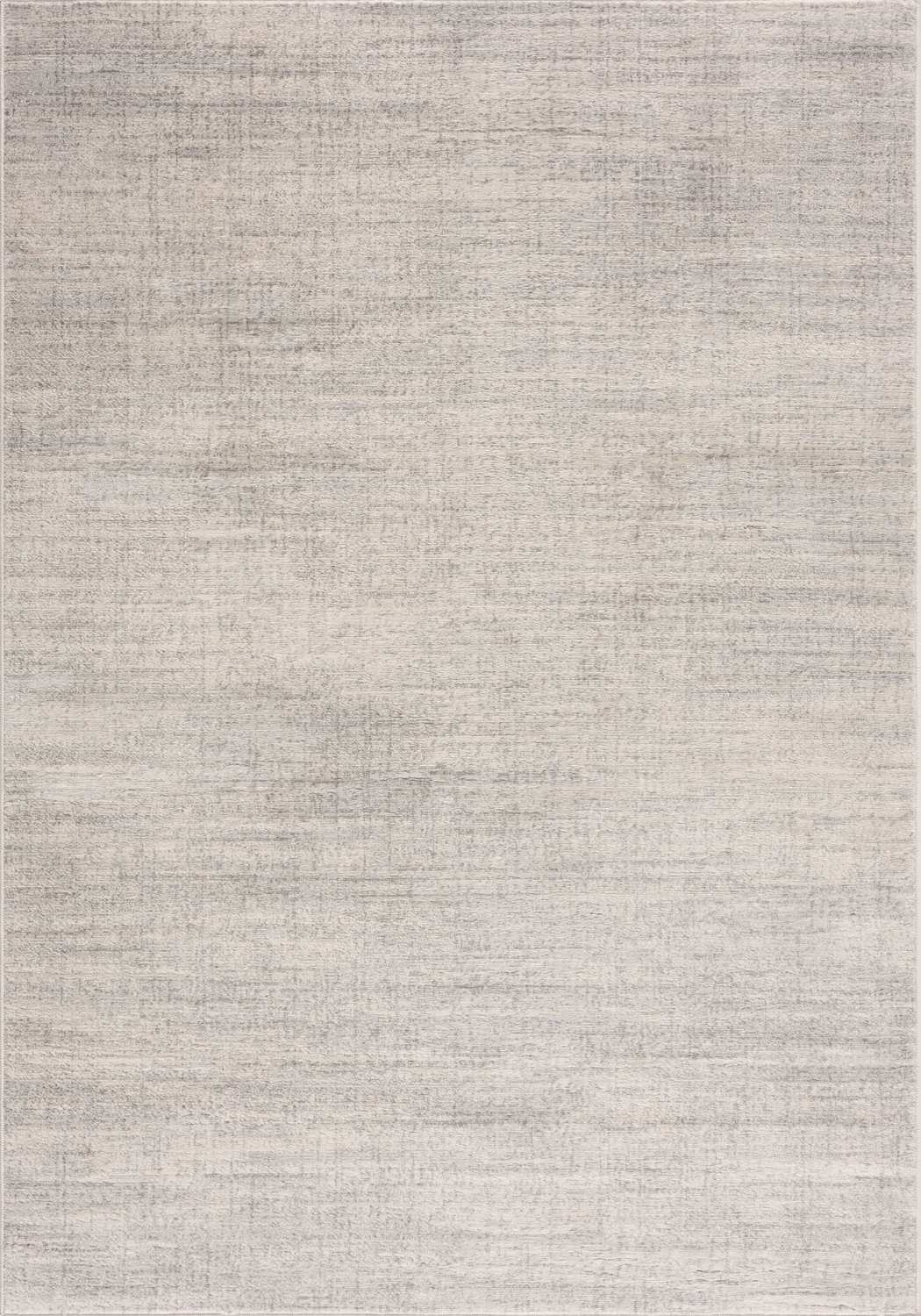
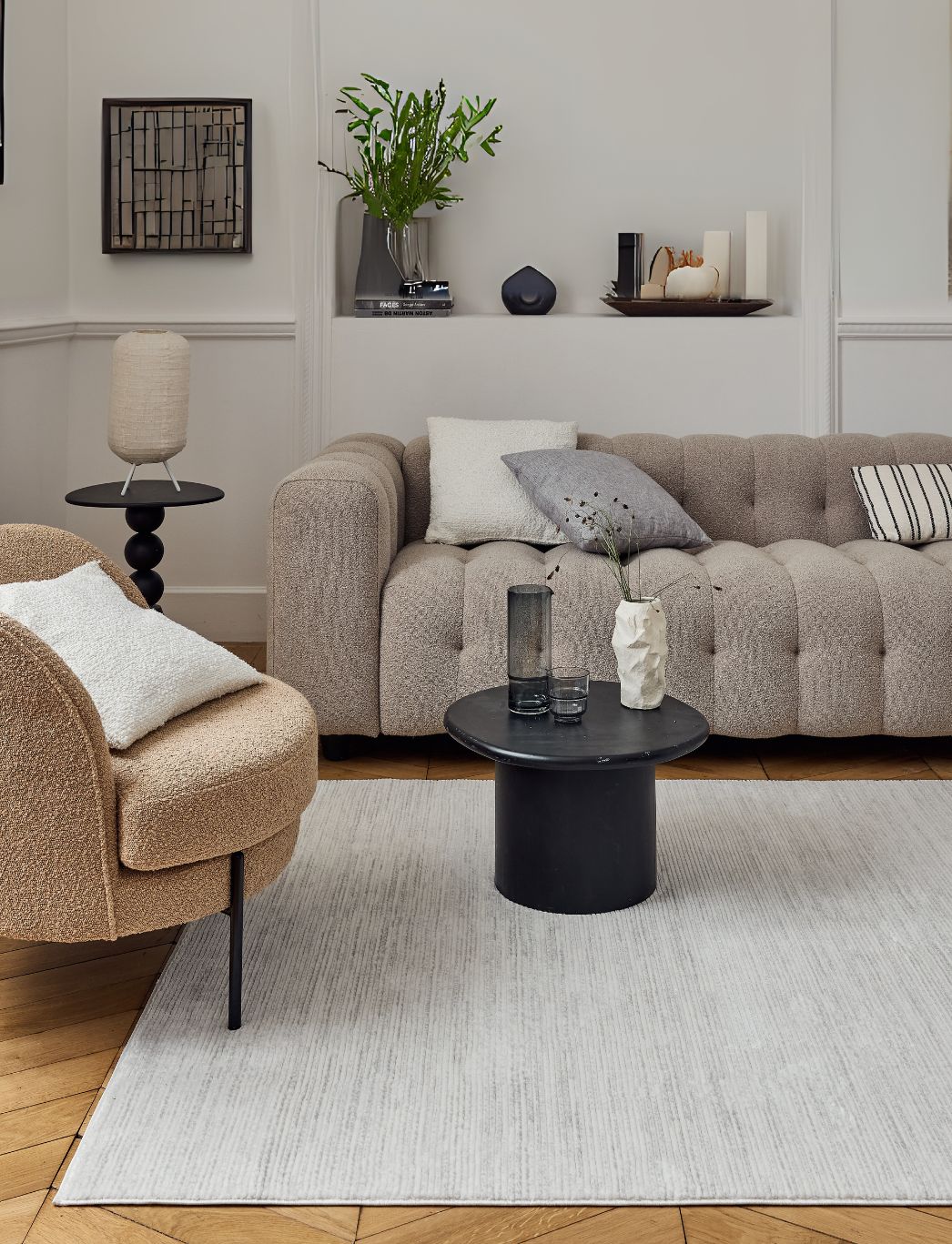
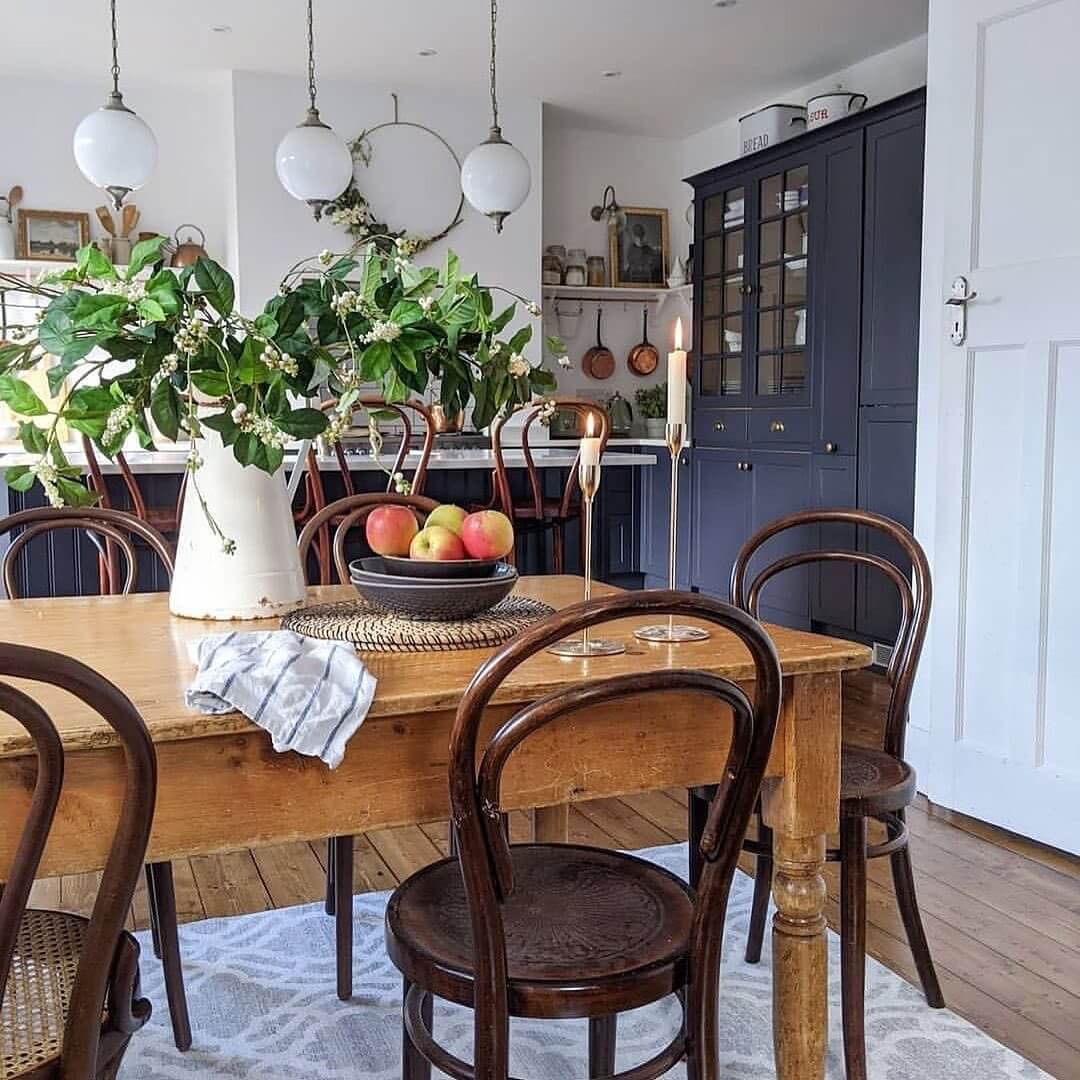
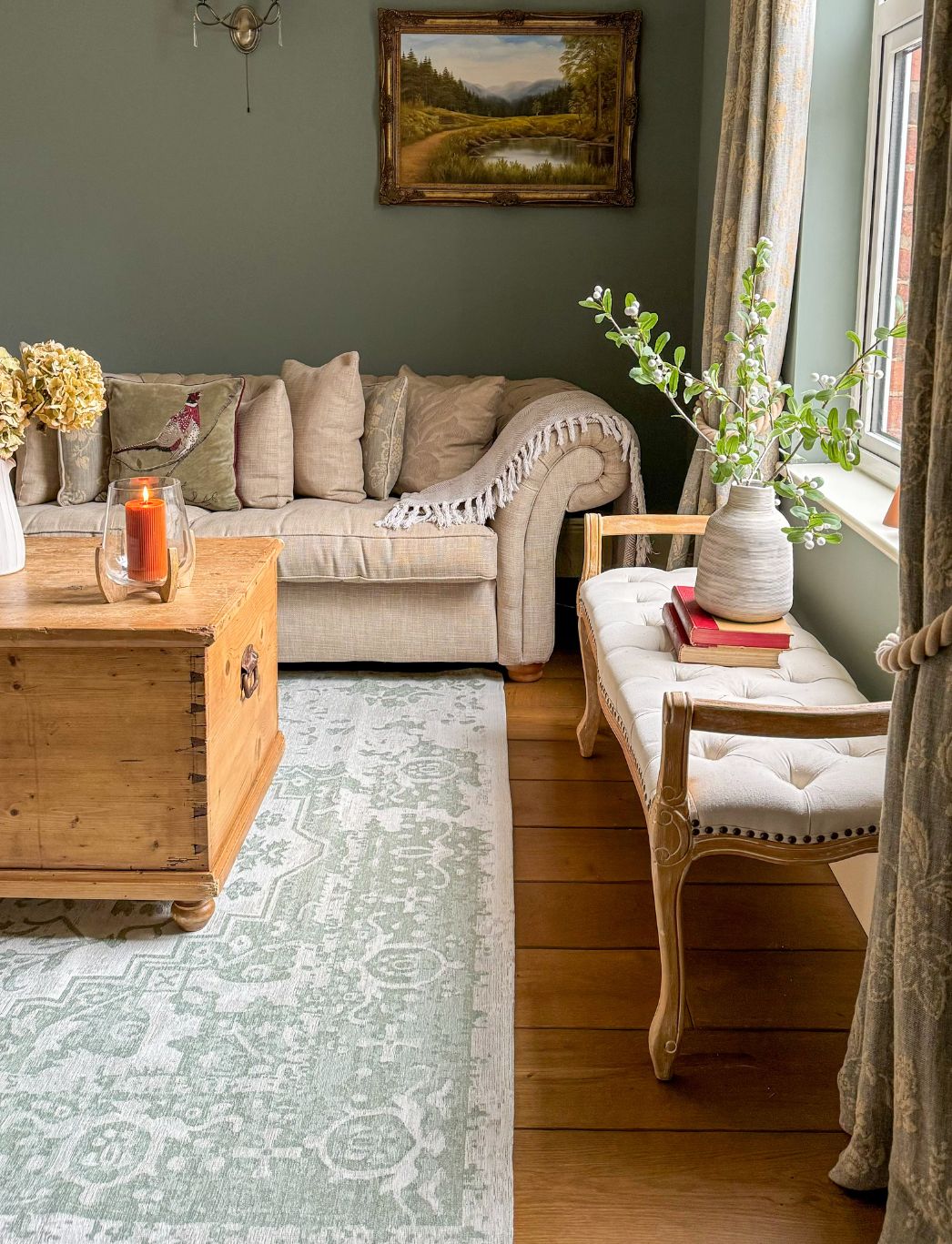
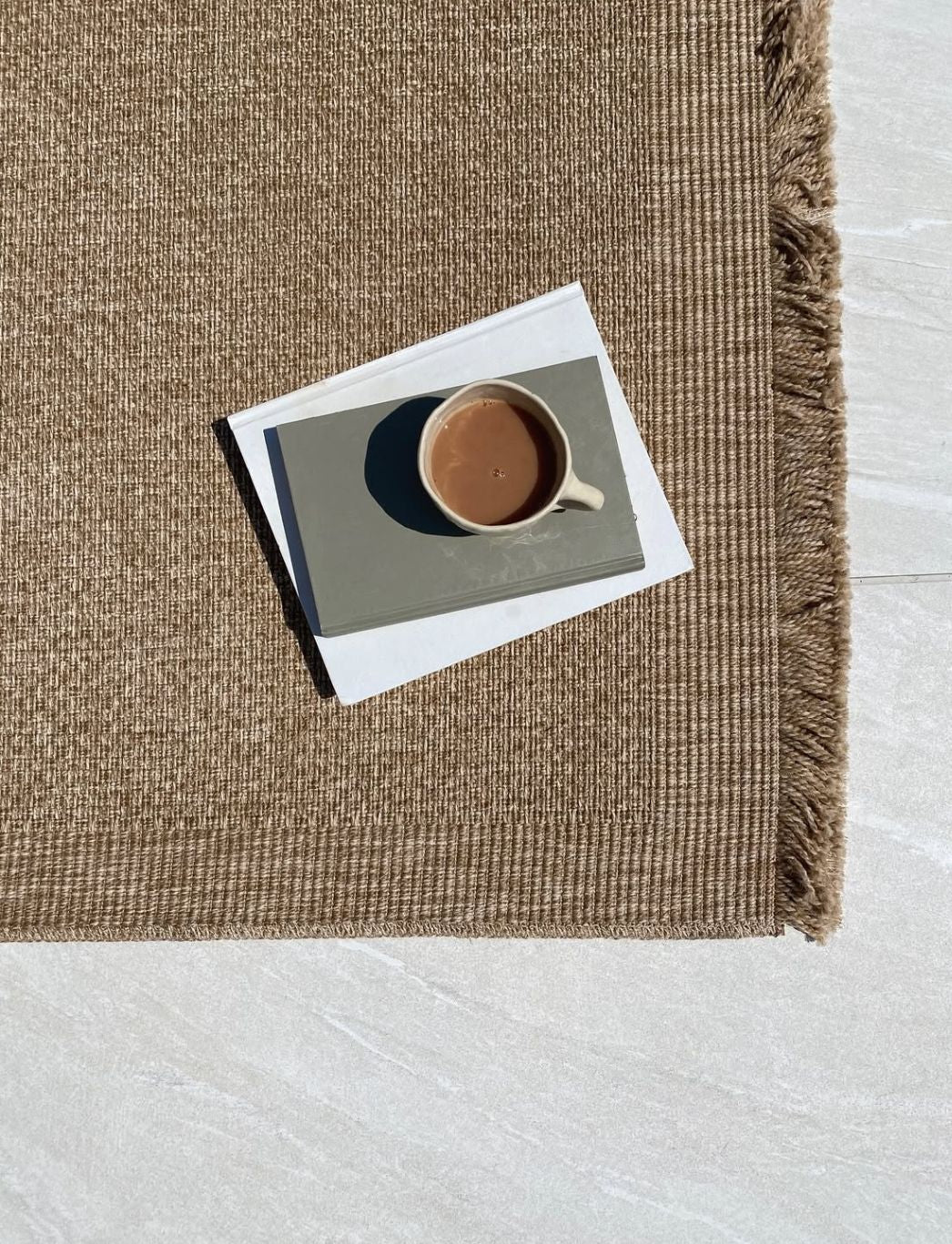
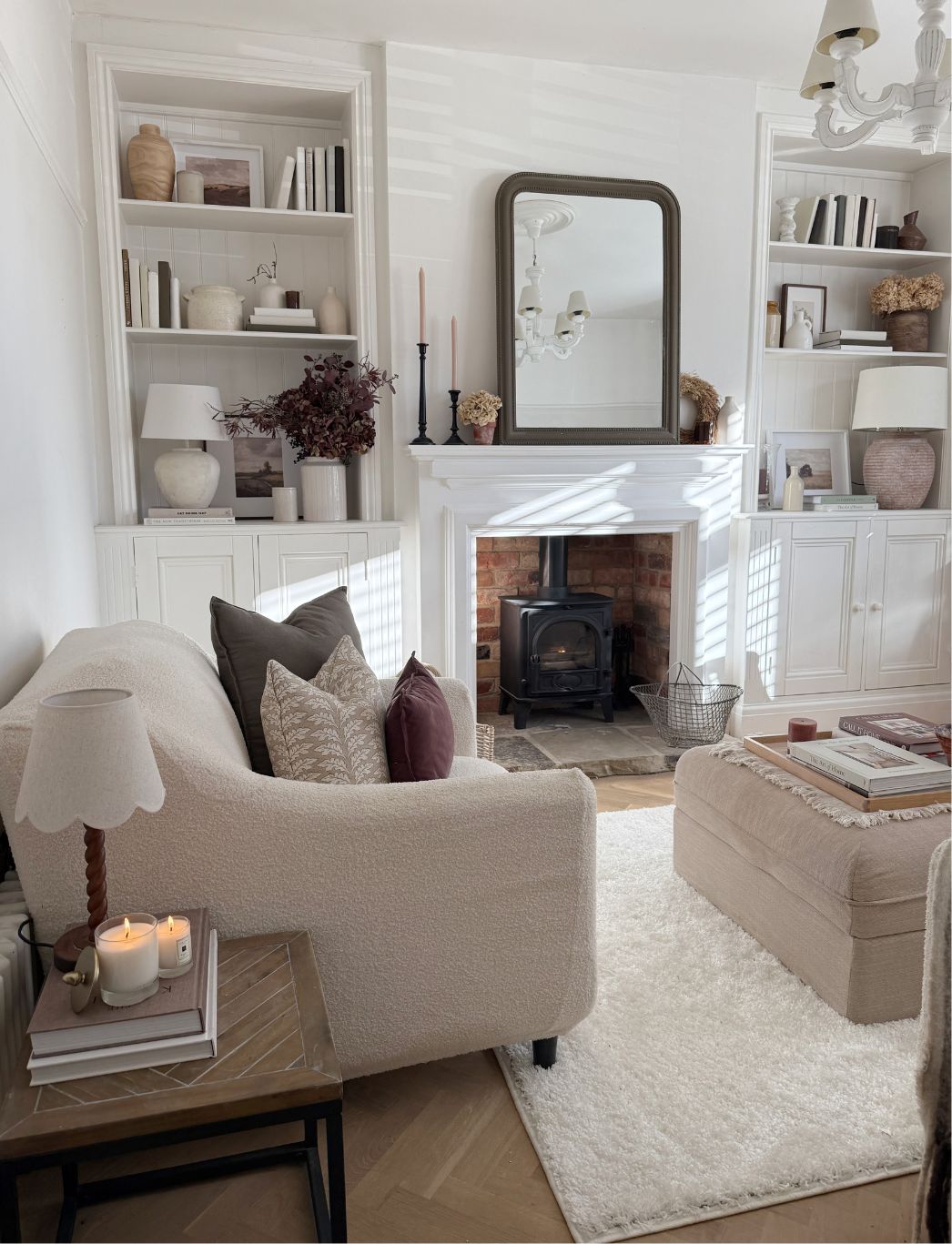
Leave a comment